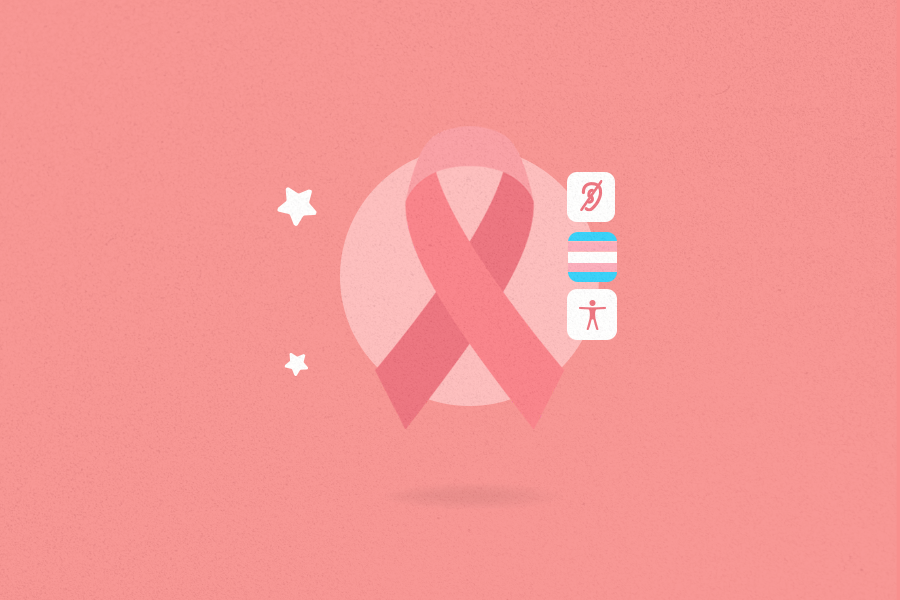
What is the role of accessibility during Pink October?

Since 2002, October has been marked by the Pink October campaign,which aims to raise awareness for breast cancer prevention. During this month, various public institutions, non-profits, and companies conduct awareness campaigns about this disease and its prevention.
However, can these campaigns effectively communicate with the entire population? Despite being directed towards women in general, many are left out, such as women with disabilities and transgender individuals.
In this text, we will explain more about what Pink October is and reflect on whether it is a truly inclusive and accessible campaign.
Why October and why pink?
The first movements for breast cancer awareness took place in the 1990s when several states in the United States joined forces to carry out actions on the subject. Shortly after recognizing this mobilization, the U.S. Congress officially declared October as the national breast cancer prevention month. Over the years, Pink October has gained increasing strength in the country and is now widely recognized.
The color pink was chosen based on an initiative by the Susan G. Komen for the Cure Foundation. Also in the 1990s, the institution organized the Race for the Cure in New York, where they began distributing pink ribbons to participants. These ribbons became popular around the United States and the world, now serving as the main symbol of the campaign.
Diversity within Pink October
As mentioned earlier, the movement was created to bring visibility to breast cancer prevention and more recently, cervical cancer. On average, there are 2.3 million new cases of breast cancer worldwide each year, according to the World Health Organization. In the United States alone, about 240 thousand new cases were estimated, making it the second leading cause of cancer death among women in the country.
Well, we already know that this is an extremely important cause, but unfortunately, the campaign still cannot effectively reach all individuals affected by this disease. Women with disabilities, transgender individuals, and even men can receive a breast cancer diagnosis, but many medical centers are not prepared to receive and treat them.
Is there accessibility for breast cancer diagnosis?
Considering the context of women with disabilities specifically, the diagnosis of breast cancer becomes more challenging. In Pink October advertising campaigns, for example, women with disabilities are rarely highlighted. Therefore, the scenario already begins with a significant lack of representation.
From a more practical standpoint, we also observe that women with disabilities have fewer opportunities for early diagnosis and treatment. This is mainly due to the lack of accessibility in medical centers, whether physical or communicational. For example, there are few establishments with wheelchair-accessible ramps, or equipment like mammography machines adapted for individuals with dwarfism. Additionally, it is very rare to find professionals who can conduct appointments in American Sign Language (ASL) to effectively communicate with deaf individuals. Unfortunately, these are just a few of the numerous examples faced by women with disabilities when seeking treatment.
These situations persist despite laws that make accessibility mandatory in health spaces. One of them is the Americans with Disabilities Act, which ensures that women with disabilities have the appropriate accessible conditions to prevent and treat breast and cervical cancer in all public health establishments.
Although Pink October still needs to work to be more inclusive, it is unquestionably an extremely important campaign. In this context, our role as a society should be to advocate for accessibility and raise awareness within the organizations to which we belong about this cause. Thus, we gradually ensure a world with more opportunities for all individuals.


